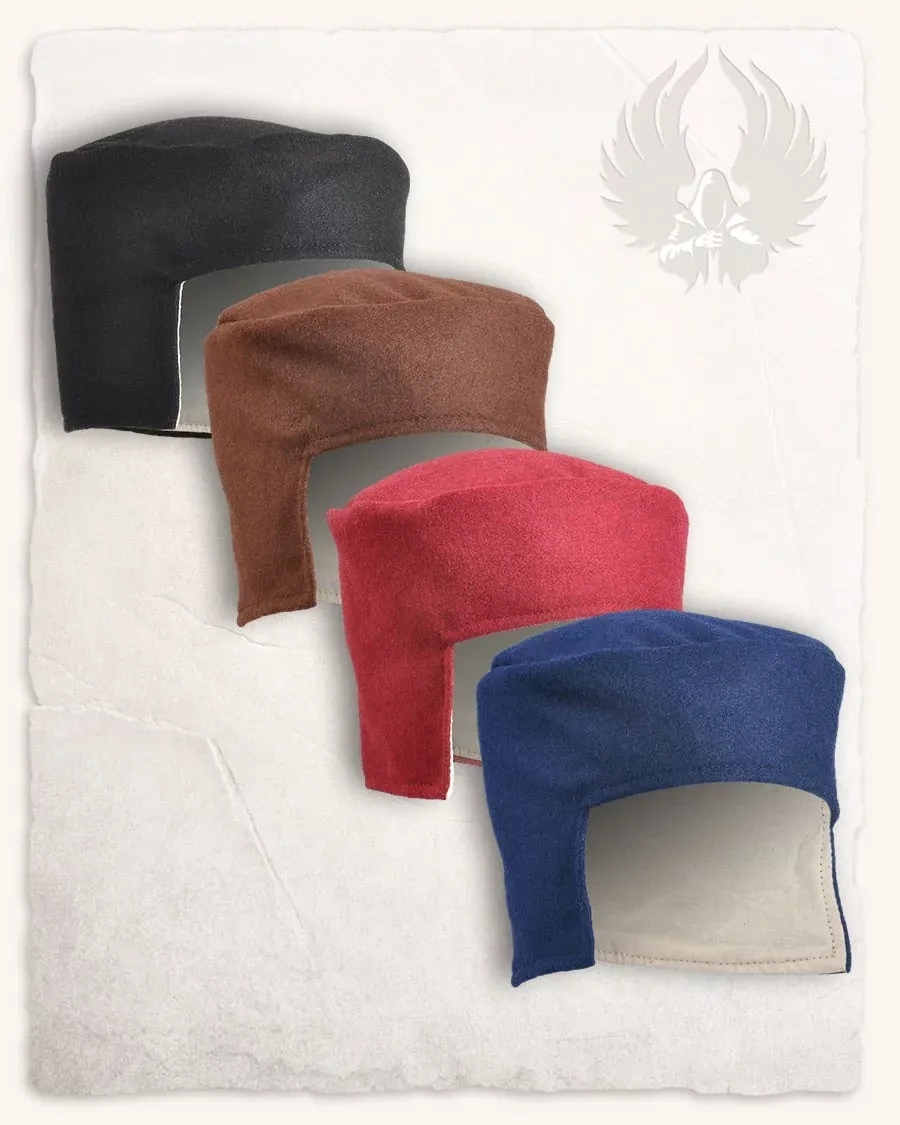What is a Capiello?
The capiello is a fascinating garment from the Middle Ages that, although it fell out of use, leaves behind a rich history both in fashion and in the military realm. During the 13th and 14th centuries, capiellos were a distinctive element among nobility, aristocrats, and monarchs, serving not only as a simple clothing accessory but also as a symbol of prestige. While it had an appearance that could remind one of a bonnet, the capiello was more than that; it was a declaration of power and social status.

The Origin of the Capiello and Its Role in Armory
The creation of capiellos is closely linked to the military realm. This garment aimed to emulate armor helmets, as well as the cylindrical helmet, both used in combat. This connection to the art of war explains its popularity among the nobility, a class always associated with the defense of territories and conquest. Capiellos were an essential part of the daily life of commanders and masters of military orders, who used them beyond the battlefield, integrating them into their monastic lives.
Distinctive Characterization of the Capiello
The design of the capiello distinguished it from other head garments of its time through its cylindrical shape. This accessory not only covered the top of the skull but extended down to the nape of the neck, providing added protection. The lateral extensions at ear level offered effective defense when placed over the mail—part of the armor covering both the head and shoulders—and helped reduce uncomfortable friction.

Evolution and Decline of the Capiello
As the 14th century progressed, the capiello lost its fashion, being replaced by other types of headgear such as bonnets, birettas, coifs, capirotes, or caps. These changes reflected both an evolution in aesthetic tastes and the development of new and more advanced armor styles suited to the times.
Historical Examples and Their Legacy
A historically significant capiello is that of Alfonso X the Wise, which is still preserved in the Cathedral of Saint Mary of the See in Seville. This relic provides a glimpse into the cultural and military sophistication that characterized this period. Furthermore, in the "Cantigas de Santa María," one can observe illustrations showcasing the artistic richness that a royal capiello could possess, adorned with brocades and embroideries.
Historical Context of the Capiello
The capiello was not only popular among the nobility; it was also a recognized piece among common knights. The "Chronicle of the Population of Ávila" speaks of these men, their armors and headgear, adding context on how such garments became symbols of authority. Knights wore the capiello as part of their gear, which set them apart from ordinary combatants, providing prestige and recognition.
| Century | Popular Headgear |
|---|---|
| 13th | Capiello, Bonnet |
| 14th | Biretta, Coif, Capirote |
The capiello, with its military origins and its presence in the daily life of medieval nobility, was much more than a simple head covering. It was a symbol of power, fashion, and practical function, an iconic representation of its time. Although its popularity declined, the capiello remains a testament to the influence that military fashion has had throughout history.
















